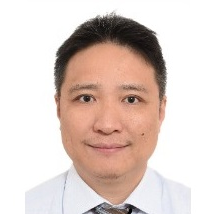Advances in Bio-Based Polymeric Materials II
A special issue of Polymers (ISSN 2073-4360). This special issue belongs to the section "Biomacromolecules, Biobased and Biodegradable Polymers".
Deadline for manuscript submissions: closed (31 October 2023) | Viewed by 2507
Special Issue Editor
Interests: bio-polymers; cellular biophysics; cell mechanics; cell imaging; actin
Special Issues, Collections and Topics in MDPI journals
Special Issue Information
Dear Colleagues,
“Bio-Based Polymeric Materials” encompass a broad spectrum of biofunctional macromolecules ranging from naturally occurring polymers to biodegradable polymers and polymeric biocomposites to bioinspired synthetic polymers. Recent advances in the synthesis, purification, fabrication, functionalization, and characterization of biobased polymeric materials have opened new avenues for emerging applications in nucleic acid delivery, tissue engineering, controlled release, biological imaging, antimicrobial therapeutics, soft robotics, bioseparations, etc. In order to propel the development of these novel materials for practical devices, further elucidations of structure–property–biofunction relationships under physiological or bioprocess conditions with innovative approaches will be critical.
This Special Issue of the journal Polymers welcomes the submission of original research papers and reviews from all multidisciplinary areas of “Bio-Based Polymeric Materials”, including, but not limited to:
- Live-cell imaging probes;
- Nucleic acid carriers;
- Polymeric scaffold;
- Controlled release devices;
- Regenerative medicine;
- Polymeric hydrogels;
- Soft nanorobotics;
- Surface functionalization;
- Layer-by-layer biomaterials;
- Polymer–biomembrane interactions;
- Biodegradable polymers;
- Molecular biosensors;
- Biophysical characterizations;
- Antimicrobial coating;
- Vaccine formulation.
Prof. Dr. Vincent Chan
Guest Editor
Manuscript Submission Information
Manuscripts should be submitted online at www.mdpi.com by registering and logging in to this website. Once you are registered, click here to go to the submission form. Manuscripts can be submitted until the deadline. All submissions that pass pre-check are peer-reviewed. Accepted papers will be published continuously in the journal (as soon as accepted) and will be listed together on the special issue website. Research articles, review articles as well as short communications are invited. For planned papers, a title and short abstract (about 100 words) can be sent to the Editorial Office for announcement on this website.
Submitted manuscripts should not have been published previously, nor be under consideration for publication elsewhere (except conference proceedings papers). All manuscripts are thoroughly refereed through a single-blind peer-review process. A guide for authors and other relevant information for submission of manuscripts is available on the Instructions for Authors page. Polymers is an international peer-reviewed open access semimonthly journal published by MDPI.
Please visit the Instructions for Authors page before submitting a manuscript. The Article Processing Charge (APC) for publication in this open access journal is 2700 CHF (Swiss Francs). Submitted papers should be well formatted and use good English. Authors may use MDPI's English editing service prior to publication or during author revisions.
Keywords
- live-cell imaging probes
- nucleic acid carriers
- polymeric scaffold
- controlled release devices
- regenerative medicine
- polymeric hydrogels
- soft nanorobotics
- surface functionalization
- layer-by-layer biomaterials
- polymer–biomembrane interactions
- biodegradable polymers
- molecular biosensors
- biophysical characterizations
- antimicrobial coating
- vaccine formulation






